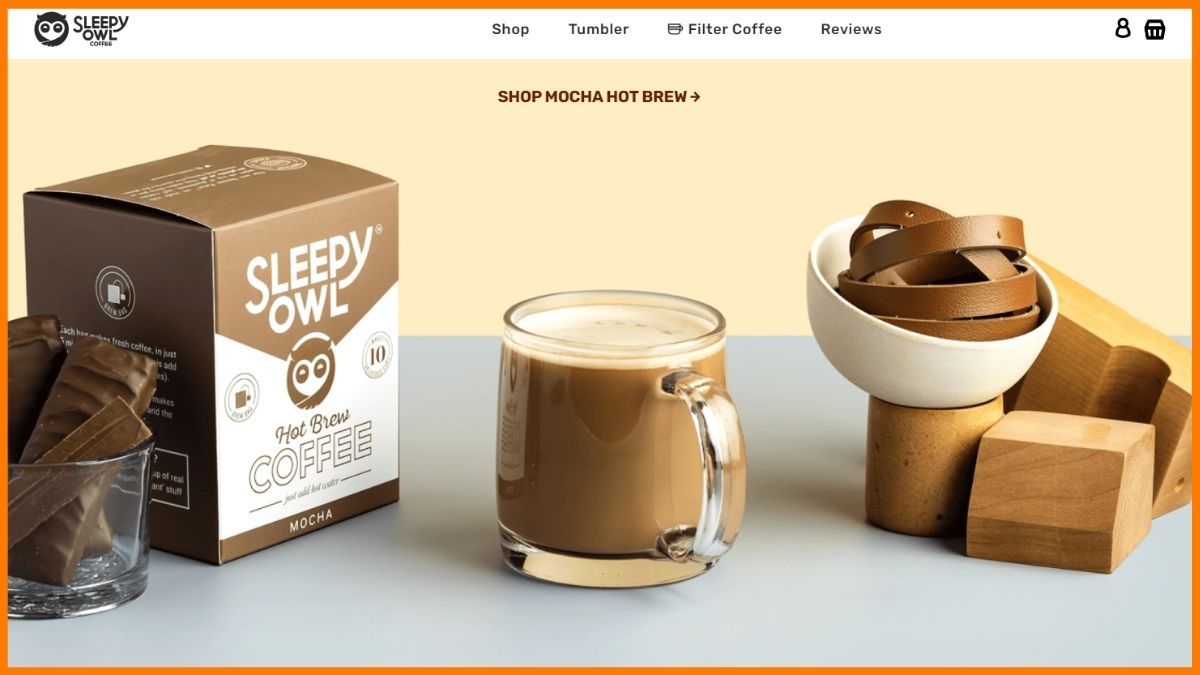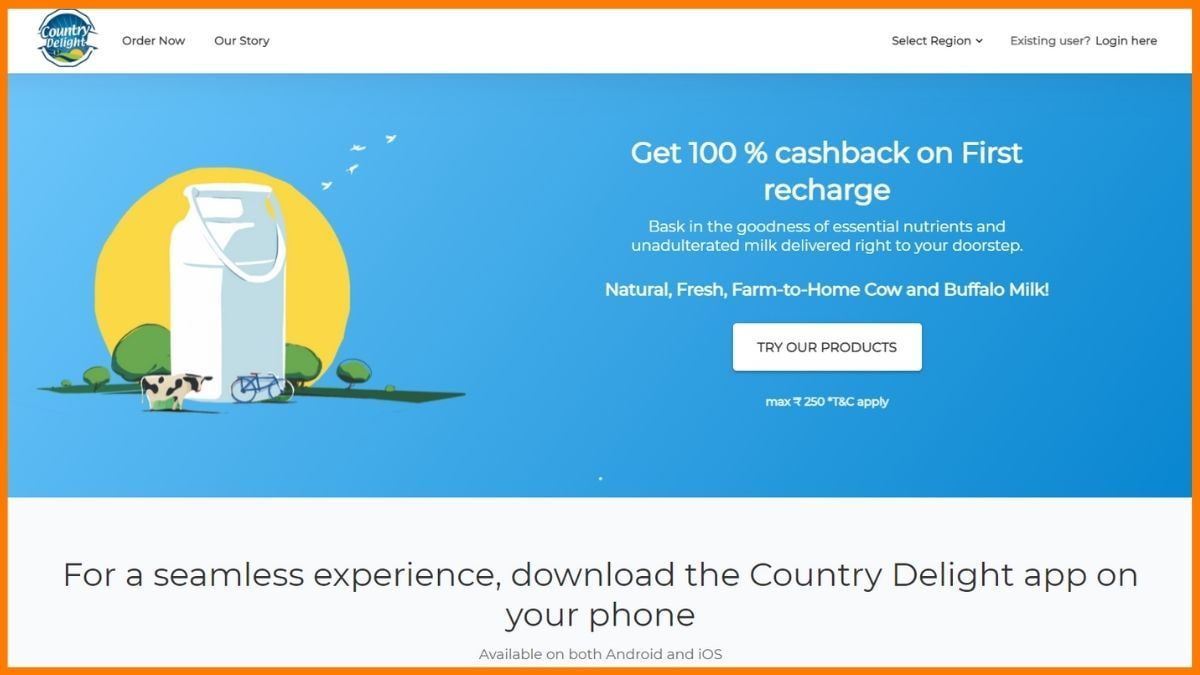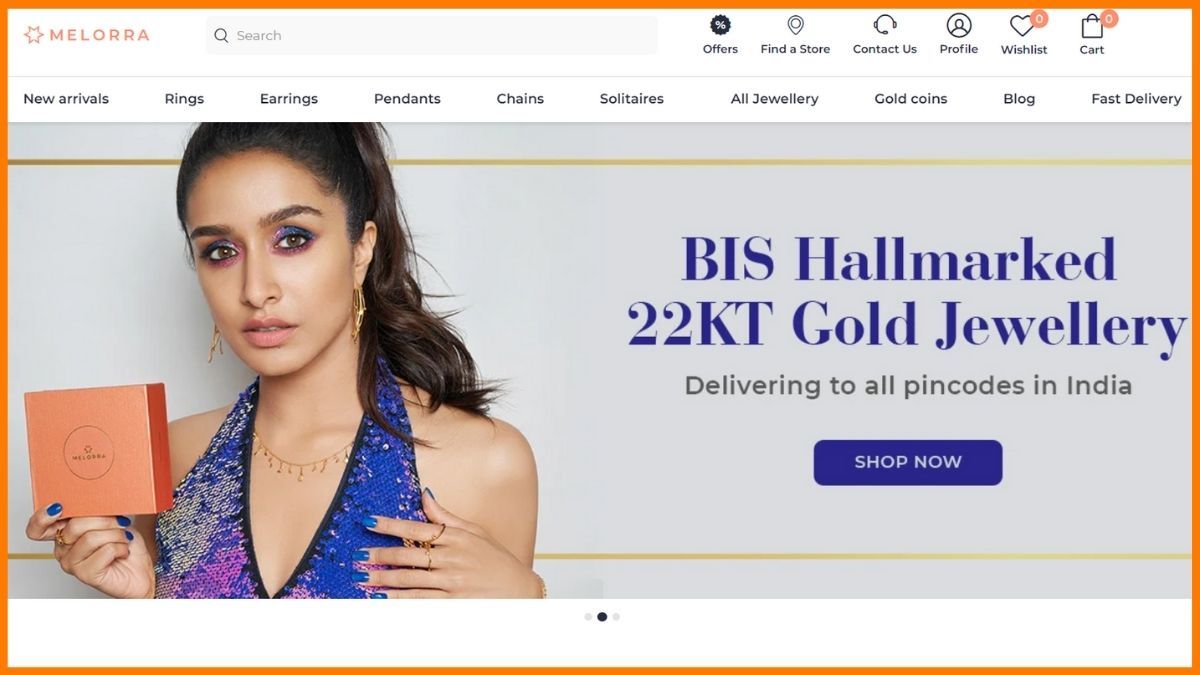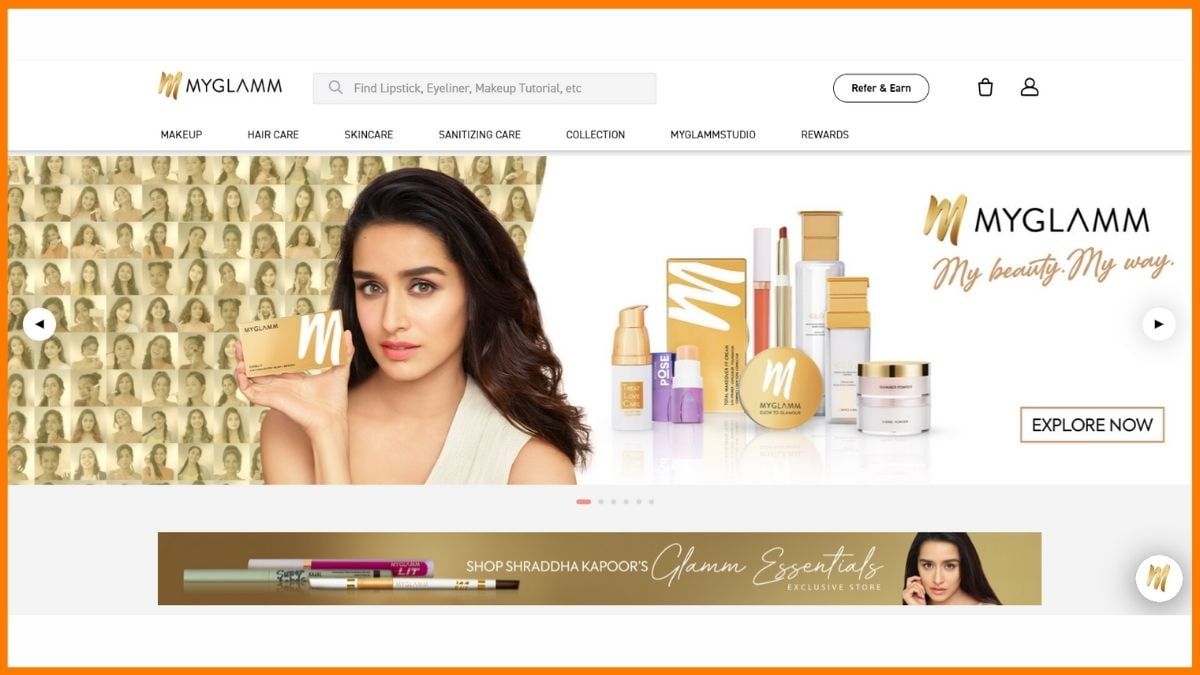Asian Paints is the leading paint company in India and primarily focuses on the manufacturing, selling, and distribution of paints, coatings, and other products related to home décor, bath fittings, and more. Asian Paints is headquartered in Mumbai, Maharashtra. Talking about Asian Paints, it is a leading name in the paint industry, known for its innovative products, high-quality solutions, and strong customer focus. It is the largest paints corporation in India and the third-largest in Asia. Asian Paints is also known as the holding company of Berger International.
The manufacturing operations of Asian Paints are currently spread across 15 countries in the world, including India and the Middle East. As per Statista, Asian Paints generated an operating revenue of INR 30800 crore in FY24.
Read to know more about the Asian Paints Case study, where you will learn about Asian Paints founders, history, tools and products, its intriguing business model, distribution strategy, supply chain network, marketing strategies & successful campaigns led by Asian Paints, Asian Paints acquisitions, and a distinct global analysis of Asian Paints.

Asian Paints Information
| Company | Asian Paints |
|---|---|
| Headquarters | Mumbai |
| Founded | 1 February 1942 |
| Founders | Champaklal Choksey, Chimanlal Choksi, Suryakant Dani, Arvind Vakil |
| CEO | Amit Syngle (1 Apr 2020 – Present) |
| Key People | Ashwin Dani (Chairman) Manish Choksi (Vice Chairman) Amit Syngle (CEO) Abhay Vakil (Non Executive Director) |
| Revenue | INR 308.5 billion (2024) |
| Type | Public |
Asian Paints – Industry
Asian Paints – Startup Story and History
Asian Paints – Logo and Tagline
Asian Paints – Vision, Mission and Goals
Asian Paints – Tools, Products and Services
Asian Paints – Global Analysis
Asian Paints – Marketing Strategies
Asian Paints – Marketing Campaigns
Asian Paints – Business Model & Supply Chain
Asian Paints – Growth
Asian Paints – Weaknesses
Asian Paints – Acquisitions
Asian Paints – Challenges
Asian Paints – Future Plans
Asian Paints – Industry
Asian Paints came out as the market leader in the paints segment, when last seen in 2023-2024. The company boasted of having a market share of around 59%. Talking about the organized segment, Asian Paints led the decorative market segment, while Kansai Nerolac led the industrial segment. The India Paints and Coatings Market is valued at USD 9.56 billion in 2024 and is expected to grow to USD 15.00 billion by 2029, with a growth rate (CAGR) of 9.38% during this period.
The current market share of Asian Paints has been recorded at 59% of the Indian paints industry.

Asian Paints – Startup Story and History
Asian Paints was started in 1942 by four entrepreneurs: Champaklal H. Choksey, Chimanlal N. Choksi, Suryakant C.Dani, and Arvind R. Vakil. Champaklal and others initially functioned out of a garage in Bombay that was rented at INR 75 per month. The main aim behind the launch of Asian Paints was to found the world’s biggest and the most successful paint company operating in India.
Asian Paints was known as ‘The Asian Oil & Paint Company’ in the beginning; the name was randomly picked up at that time from a telephone directory. It was a set up as a partnership firm of four friends when it was started in 1942.
In 1945, the partnership firm turned itself into a private limited company following a turnover of INR 0.35 million that year.
During World War II and the Quit India Movement of 1942, there was a temporary ban on paint imports. As a result, companies such Shalimar Paints and Asian Paints took it up themselves to sustain the demand for paints. Asian Paints reported an annual turnover of INR 23 crores in 1952.
In 1957, Asian Paints achieved a breakthrough when its R&D department developed a process for producing international-quality phenolic and maleic acid resins in a simple coal-furnace through hand-stirring. In the same year, the company set up a plant at Bhandup, Mumbai to cater to the rising demand for paints in the urban areas. By 1967, Asian Paints has already became the leading paints manufacturer in India.
Dropping The Mascot
In September 2012, Asian Paints unveiled a new brand identity and a logo made by Soha Ali Khan, dropping its iconic mascot Gattu in the process. Gattu, the impish boy, was made by famous Indian cartoonist R.K. Laxman in 1954. The new identity was conceived after the company conducted an extensive consumer survey in some major Indian cities.

Asian Paints – Logo and Tagline
Though Asian Paints has come up with numerous taglines, the tagline “Har ghar kuch kehta hai” is one of the iconic of the Asian Paints taglines.
The logo of Asian Paints is:

Asian Paints – Vision, Mission and Goals
Asian Paints aims to be one of the top five companies in the decorative coatings industry (worldwide) by enlarging its expertise in emerging markets.
- The company is also working to assure environmental compliance and sustainability by focusing on waste minimization and water conservation at all of its plants across India.
- Asian Paints’ mission is to provide paints as per market demand while ensuring the desired level and quality of customer satisfaction. Asian Paints emphasizes the continuous availability of the right product mix at the right time.
- Simultaneously, the company intends to take over the industrial coatings business by forming alliances with established global partners.

Asian Paints – Tools, Products and Services
The Asian Paints tools and products primarily belong to these categories:
- Paints and Coatings: Interior and exterior paints, wall textures, wood coatings, metal finishes.
- Waterproofing Solutions: Wall, roof, and floor waterproofing.
- Home Décor: Wallpapers, stencils, and home improvement products.
- Chemicals: Adhesives and industrial coatings.
- Painting Tools: Brushes, rollers, spray machines, and color visualizer tools.
- Digital Tools: Color selection apps, shade cards, and home décor visualizers.
Services
- Home Painting Services: End-to-end professional painting solutions.
- Consultation Services: Expert advice on color and design.
- Waterproofing Services: Inspection and treatment for leakage issues.
- SmartCare Services: Specialized solutions for surface and structural problems.
Asian Paints – Global Analysis
Asian Paints runs its business in 15 countries and has 26 paint-manufacturing facilities worldwide servicing customers in over 65 countries. Besides the brand ‘Asian Paints’, the group operates around the world through its subsidiaries: Asian Paints Berger, Apco Coatings, SCIB Paints, Taubmans, Causeway Paints, and Kadisco Asian Paints.
Asian Paints’ global setup is as follows:
- Asian Paints operates in South Asia (India, Bangladesh, Nepal, and Sri Lanka), where Asian Paints has 15 manufacturing units, and is called Asian Paints Causeway in Sri Lanka
- The company is present in South East Asia, in Indonesia, where the company has 1 manufacturing plant
- Asian Paints operates in South Pacific, where it has 2 manufacturing plants in total and serves Fiji, Samoa Islands, Vanuatu, and Solomon Islands. In Fiji, Asian Paints is known as Apco Coatings and Taubmans and in Samoa Islands, it is known as Taubmans, while in the remaining countries, Asian Paints is known as Apco Coatings
- Asian Paints operates in the Middle East (Oman, Bahrain, Egypt, Dubai, Qatar), where it has 5 manufacturing plants. It is known as SCIB Paints in Egypt and Asian Pains Berger in the rest of the countries
- Asian Paints has set up 3 manufacturing plants in Ethiopia, and is known as Kadisco Asian Paints
- Taubmans in South Pacific (Fiji and Samoa)

Asian Paints – Marketing Strategies
- Nationwide Reach: Unlike its competitors who concentrate only on the urban areas, Asian Paints embraces countrywide distribution through a widespread network of 70,000 dealers. The company maintains a large network of regional offices, company depots, and sales personnel to assist dealers across India.
- Smart Branding: Along with initiatives to build customers’ trust, Asian Paints also focuses on its communication and brand strategy. In 2000, Asian Paints appointed the Bangalore-based “Momentum” as consultants for a new advertising strategy meant to foster an attractive public image.
- Lower Costs and Emotional Advertising: Asian Paints reduced the cost of raw materials to bring down the price of its paints. It came up with another advertising strategy that created an emotional connection with the customers.
- Custom Products: Asian Paints is quite strong in production-marketing coordination. Its policy of offering tailor-made products to fulfill customer needs has resulted in an ever-increasing product range.
- Award-Winning Excellence: Corporate reputation has been a major plus point for Asian Paints. The image is that of a successful, well-managed, and trustworthy company. Asian Paints is the recipient of several accolades and awards.
- Technology Driven: Asian Paints placed a huge emphasis on technology and marketing in its initiatives. It implemented Enterprise Resource Planning (ERP) and Supply Chain Management (SCM) solutions for rationalizing processes.
- Brand Partnerships: By partnering with PPG INC, a leading manufacturer of automotive coatings, Asian Paints seeks to meet the ever-growing requirement of automotive coating, industrial powder, protective coating, industrial light coating, and industrial container coating in India.
The above-mentioned steps resulted in a strong emotional connection between Asian Paints and its customers. The strategies lured in new customers while retaining the existing ones.
Asian Paints – Marketing Campaigns
Asian Paints have made cricketer Virat Kohli its brand ambassador in April 2024, who featured for the NeoBharat Latex Paint ad.
Asian Paints NeoBharat Latex Paint | Har Ghar Khelega, Har Ghar Khilega
Some of the major Asian Paints campaigns are:
- “Don’t lose your temper, use Tractor Distemper”: This slogan belonged to the very first campaign launched by Asian Paints. The campaign showed the popular mascot ‘Gattu’ with a paint bucket in his hand.
- “Har Ghar Kuch Kehta Hai”: This campaign established Asian Paints as a premium brand with an emotional touch. The idea behind the campaign was that each color had a story to tell. Asian Paints tried to encourage the initiative of painting one’s home for festive occasions like Diwali, marriage, childbirth, etc.
- “Where The Heart Is”: This campaign proved to be a masterstroke strategy for Asian Paints. It featured celebrities such as Sushant Singh Rajput, Saurav Ganguly, Radhika Apte, Mandira Bedi, and others who described the significant role Asian Paints played in their lifestyle through color and home décor.
The campaign featuring Sushant Singh Rajput
- #PeopleAddColour: The recent campaign created a heart-warming depiction of paying guests not being inferior to one’s family. It showed how rooms refurbished with Asian Paints decals brought paying guests closer to their landlords.
- ‘Budget wala paint’: This Ad campaign ‘Budget wala paint’ promotes Tractor Sparc Emulsion. By highlighting the budget issues faced by consumers, Asian Paints launched a pocket-friendly paint that offers a rich-looking finish at an affordable price.

Asian Paints – Business Model & Supply Chain
Asian Paints is one of the companies that started identifying the trends and of consumption quite early in its game and eventually constructed innovative and effective strategies around the same. Asian Paints boasts of a market cap of $2332.76 billion as of November 2024, and this would have hardly been possible had it not targeted the right section of people with quality products, powered by the right marketing mix.
Asian Paints has developed its business on the B2C business models, where the brand manufactures and distributes products direct to consumers and via retailers and distributors.
No doubt Asian Paints brainstormed amazing advertising campaigns that led to its marketing wins time and again. For instance, when the company launched Gattu the mischievous kid in 1954, the mascot immediately appealed to all the Indian consumers, especially the middle-class society.
Furthermore, the company spent around INR 8 crores to buy a mainframe computer to become the first private company to own a computer, which was a bold move indeed. This computer was used for analyzing data and helped the company in forecasting their demands and enhancing their service levels across the supply chain, whereas the other companies continued to use computers generally for payroll and administration works even later.
Asian Paints continued with its judicious investments to improve its supply chain efficiency and always aimed to stay a step ahead of its competitors and rivals, which it did throughout the years.
The company launched its IPO as early as 1982 and used the proceedings to expand its business and launch a wide range of exciting new products. The supply chain practices that Asian Paints developed, always remained matchless in the paints industry in India. The eye for innovation with a sole focus on the consumer side of the paint industry is something that Asian Paints is distinguished for and which fueled the company to pursue with other sub-brands like Ultima, Royale, and more. All of which enjoyed their own individual successes.
The company also believed in scaling up its operations and improving its factories and their capacities for expansion with cutting-edge machinery, and a wise investment in their IT operations.
Along with being one of the most prominent and trustworthy names in the paints industry, Asian Paints also holds its presence in a wide range of products and industries including kitchen, bath fittings, and an array of other services like waterproofing solutions, color consultancy, interior designing and more.
The supply chain practices that Asian Paints developed always remained matchless in the paints industry in India. Asian Paints has vast distribution network and channels through which it distributes its products and services with the help of retailers, wholesalers, and distributors. The company now operates in more than 14 countries and has already set up 26 paint manufacturing plants enjoying consumers from over 60 countries in total.
Berger International Limited, Taubmans, SCIB Paints, and Kadisco, and Apco Coatings are some other subsidiaries of Asian Paints that operate globally.
Target Market of Asian Paints
Asian paints target a whole range of customers, including but not limited to homeowners, corporates, automobile companies, wholesalers, and distributors.
- The retail customers of Asian Paints are usually the people of 20 years and above from middle, upper-middle, and higher-income groups.
- The corporate customers of the company belong from private companies, government bodies, and other institutions.
Asian Paints – Growth
Starting before the Indian independence, in 1942, Asian Paints has witnessed a long and successful journey indeed. Within 25 years of its existence, Asian Paints became a corporate workforce and emerged as the leading paints company of India. It has been leading India’s paints market since 1967 and is, today, twice the size of any paints company in India.
Asian Paints is present in the Decorative paints department, where the company boasts of products that caters to Interior Wall Finishes, Exterior Wall Finishes, Enamels and Wood Finishes. Asian Paints is also present in the Industrial Coatings space, where the company operates through two 50:50 joint ventures with PPG, Inc, USA.
Asian Paints also diversified into chemical products due to vertical integration, when it produced products like Phthalic Anhydride and Pentaerythritol, which are used in the paint manufacturing industries, but the company discontinued the production of Phthalic Anhydride since the end of July 2017. The Home Improvement and Decor segment also has Asian Paints’ products in the form of Sleek and Ess Ess, which can be seen in the Kitchen and Bath fittings space.
The company has recently forayed into the Surface Disinfectants and Santisation segment by launching Viroprotek. Furthermore, Asian Paints is also offering the sanitisation service, San Assure and Safe Painting service to its customers since the Covid-19 pandemic broke out.
Some more growth highlights of Asian Paints are:
- Asian Paints has INR 35,000 crores consolidated revenue milestone in FY2024
- The company is present in 65 countries and has 26+ paint manufacturing facilities in the world
- It services consumers from over 60 countries globally
- Asian Paints currently enjoys the possession of over 50% of the market shares
Asian Paints Financials
Asian Paints reported a 42.4% drop in net profit for Q2FY25, which stood at INR 694.64 crore, down from INR 1,205.42 crore last year. Revenue also decreased by 5.3% year-on-year, falling to INR 8,003.02 crore from INR 8,451.93 crore.
The company reported INR 30,727.7 crore in revenue in FY23-24 from the sale of products and services, marking a 2.6% increase from previous year. EBITDA stood at INR 7,855.0 crore, up by 23.9%, while free cash flow reached INR 3,571.0 crore, a growth of 18.5%. The Return on Capital Employed (ROCE) was 41.2%, reflecting an 8.4%
Asian Paints registered its revenue from operations in Q4 FY22 at INR 7892.67 crore , thereby witnessing an 18.66% jump. The consolidated sales of Asian Paints also saw a rise of over 20% from Q4 FY2021, which became INR 7890 crore. The PBDIT of the company witnessed a 12.8% surge, which was INR 1156.31 crore and became INR 1304.88 crore.
The consolidated sales of Asian Paints increased by 34.6% from INR 21,485.20 crore in FY21 to INR 28,923.48 crore in FY22. However, the PBDIT decreased from INR 4304.35 crore in FY21 to become INR 4303.42 crore in FY22.
Asian Paints Shareholding
Being one of the largest paints manufacturer in the world, Asian Paints’ shares attract the investors’ attention always. The majority of its stakes are held by the Promoter and Promoter Groups, who are followed by the Institutions, which hold over 25% of the stakes, as of November 2024.

Asian Paints – Weaknesses
- Asian Paints owns only 15% of the market share in the industrial paints segment. It lags behind Goodlass Nerolac which has a market share of 43%. Since the segment is pegged to grow massively in the future, a fallback in this category can be a disaster for Asian Paints.
- Low international business growth: Though Asian Paints is clearly a winner in India, and is expected to continue dominating the Indian markets, the company has not scaled much outside India, which is one of the weaknesses of the company that needs to be overcome in the times upcoming.
- Production and inventoring issues: In the decorative paints segment of the paints industry, the customers’ tastes are ever-changing, these changing customer tastes puts huge pressure on the brands like Asian Paints, which needs to constantly update their production and inventory to satisfy the customers.
- Widening product mix puts a strain on production distribution, accounting, and administration. At the same time, the company’s innovation strategy for new products is inadequate.
Asian Paints – Acquisitions
Asian Paints has acquired 4 companies to date. The last of its acquisitions was that of Nanova, which came in on February 15, 2024. Here’s a list of the Asian Paints acquisitions:
| Company Acquired | Date | Deal Value |
|---|---|---|
| Nanova | February 15, 2024 | Undisclosed |
| White Teak | April 1, 2022 | $14.17 million |
| Sleek International | March 20, 2013 | – |
| Berger International | September 6, 2002 | – |
Asian Paints – Challenges
Being one of the pioneering companies that shaped the Indian industry of paints, Asian Paints had to face numerous odd obstacles since it started its journey. Numerous companies have cropped up and gone but Asian Paints remained the same old favourite of the Indians.
Crude Oil Prices
One of the major challenge that Asian Paints will likely face is the increase of the prices of crude oil and their derivatives. Zinc oxide, titanium oxide, solvents like turpentine and other additives are all based out of crude oil and its derivatives. Therefore, an increase/decrease of the prices of them directly affects the prices of the paints and other products of Asian Paints. Besides, the raw materials make up around 55-58% of its total expenses, which is huge indeed, and any changes in the same, would impact the expenses and the profit/loss scale of Asian Paints.
Fall of Asian Paints Shares
The shares of Asian Paints has reportedly fell by around 7% on May 25, 2022. The company has noted over 9% fall of its share in the last two days on May 25th and 26th, 2022. One of the most prominent reasons for the fall of the Asian Paints shares is the announcement by Grasim, where the company has announced that it will be increasing its capital expenditure in the paint business by nearly Rs 10,000 crore over the 2-3 years upcoming. This is done by the Aditya Birla-owned company to increase its production capacity. This move by Grasim is will certainly increase competition in the market. Asian Paints, which has currently been found to possess over 50% of the market share, might also see a decline of its total market share in the upcoming years.
Asian Paints’ shares are currently trading at INR 2439 per share, which is much less than its high price of INR 3590.
Covid Waves
Asian Paints had also seen the worse during the Covid-19 onslaught, where along with witnessing a dip in its sales and services, the company also witnessed demand uncertainty and more.

Asian Paints – Future Plans
The company aims to achieve INR 1 lakh crore in revenue over the next decade by expanding its product range, said MD and CEO Amit Syngle.
The company is also transforming its home decor business into a complete one-stop shop, offering products like lighting, doors, windows, fabrics, furniture, as well as bath and kitchen essentials.
Asian Paints aims to consolidate its dominant market position in India by launching new products that will be in line with the developments that the Indian market is seeing both in the decorative paints and industrial coating segments.
Conclusion
Asian Paints started a revolution in India through unique color shades, themes, and refreshing patterns. It brought ‘home decor’, often seen as a luxury, within the reach of the Indian middle-class population. With an imposing market share, an impressive resilience and its unique business and revenue model, the company has still got the mettle to rule! This case study on Asian Paints shows its focus on product variety, technology, and brand strength has made it a leader in the Indian paints and home decor market.
FAQs
What is Asian Paints?
Asian Paints is an Indian multinational paints company that offers a wide range of products and services involving manufacturing, selling and distribution of paints and coatings, bath fittings in home decor, santisers and sanitisation services and more.
When was Asian Paints founded?
Asian Paints was founded on February 1, 1942.
Who are the founders of Asian Paints?
Champaklal Choksey, Chimanlal Choksi, Suryakant Dani, and Arvind Vakil are known as the founders of Asian Paints.
What is the Asian Paints color bucket price?
The Asian Paints color bucket prices start from around Rs 500/litre.
What is the Asian Paints market share?
Asian Paints market share is currently around 59%, as of November 2024.
Which is Asian Paints origin country?
Asian Paints’ country of origin is India. The company is currently headquartered in Mumbai, Maharashtra.
What is in the Asian Paints product portfolio?
The Asian Paints product portfolio consist of paints and textures, wallpapers, products of health and hygiene, and other services.
What is the USP of Asian Paints?
The USP of Asian Paints lies in its strong brand reputation, wide range of high-quality products, custom solutions for customers, and quick delivery. The company also focuses on innovation, offering advanced technology like color visualization tools and eco-friendly products.
How has Asian Paints’ consumer-focused approach enabled it to consistently meet the needs and preferences of customers in the paint industry?
Asian Paints’ consumer-focused approach helps it meet customer needs by offering personalized products, color tools, and eco-friendly options. Its strong customer service and distribution network ensure satisfaction, keeping it ahead in the paint industry.


































